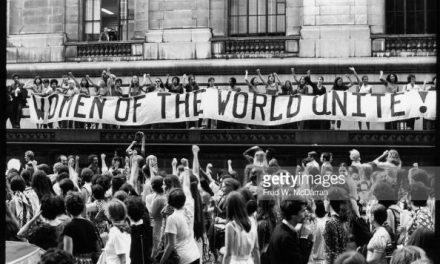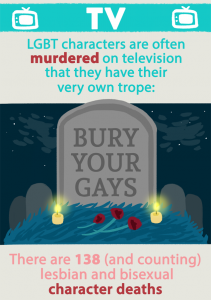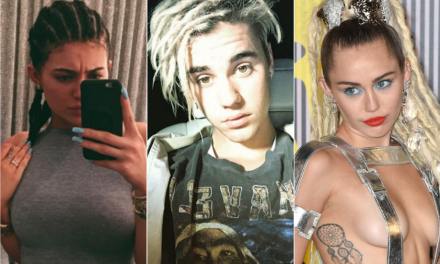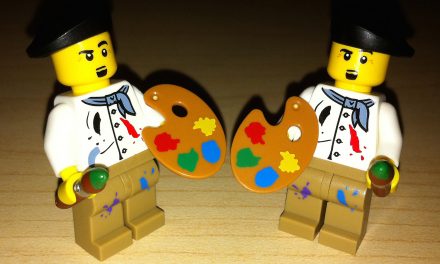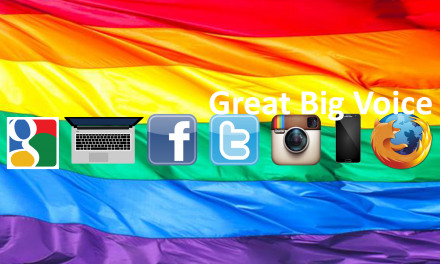
Bury Your Tropes
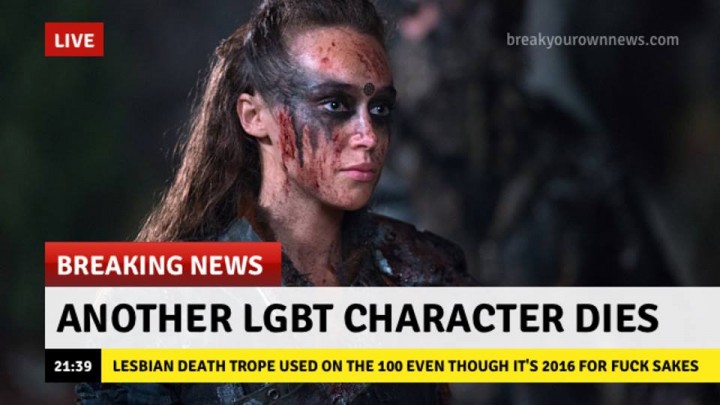
Television is an important medium for sharing stories. In the age of “peak TV”, there’s more options now than ever for people to choose which shows to tune into. TV has always been important for providing characters that people identify with, as well as showing characters who live different lives than the people in our own circle. It helps us foster empathy and understanding for new people and ideas. This is why the representation of gays, lesbians, and bisexuals on TV is so vital. LGB people are people who are attracted to others of the same sex. Gay usually specifically refers to men who are attracted to other men, lesbians are women who are attracted to other women, and bisexuals are attracted to both sexes. “Will & Grace” was a TV show that aired in 1998 and had two gay men as primary characters. It is credited with making “Americans comfortable with the gay next door” and former Vice President Joe Biden said “I think ‘Will & Grace’ did more to educate the American public than almost anything anybody has ever done so far.” This is an example of the impact television can have on the main culture of society and why it is so important for creators to think about the stories they choose to tell.

Alec and Magnus on episode 2×07 of “Shadowhunters”
In terms of LGB representation, television and society have come a long way since the days when advertisers threatened to pull ads during a show featuring a lesbian kiss or networks made studios reshoot gay kisses in the dark. But we still have a lot to work on. For one thing, even though there have now been multiple LGB kisses and intimate relationships shown on all avenues of television, these scenes are still rarely treated the same as their heterosexual counterparts. On a recent episode of the Freeform television drama “Shadowhunters”, two of the main characters had a plot line that revolved around them having sex together for the first time. The characters were Alec and Magnus, a primary couple on the show since the beginning, and whose first season storyline involved Alec coming out and accepting that he is gay. Even though these two are one of the main couples and a fan favorite on the show, when it finally came time for them to have sex, all that was shown was a brief kiss and them going into another room. The contrast between this scene and the hot-and-heavy scenes of the heterosexual couples of the show might not have been as obvious if earlier in the episode another character, Jace, had not been shown hooking up with a random girl. In this scene, Jace and the girl are completely naked and shown rolling around in bed, kissing. The scene goes on for almost an entire minute, as compared to the treatment of the gay couple who were shown kissing for approximately 5 seconds before cutting away. The heterosexual couple in the episode are not even a main couple, the girl is completely unknown before the scene and I’m not even sure she ever gets a name.
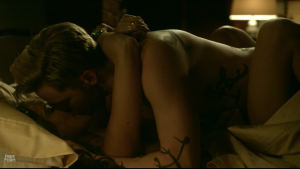
Jace and his one-night stand on episode 2×07 of “Shadowhunters”
Meanwhile, Magnus and Alec have never had a scene as heated as the one between Jace and his one-night stand, despite being love interests since the beginning of the show and being audience favorites. Why? Heteronormativity, my friends. Laura Kacere defines heteronormativity as “the assumption and promotion that heterosexuality is the only ‘normal’ and ‘natural’ orientation out there, privileging those who fit the norm and positing anyone outside of this as abnormal and wrong.” The “Shadowhunters” writers probably don’t even realize how heteronormative they’re being, but by continually writing explicit intimate and sexual scenes for their heterosexual couples and none for their gay couple, they are privileging heterosexuality and sending out a message that there is something wrong with the homosexual relationship between Magnus and Alec.
“Shadowhunters” is not the first show to do this and probably will not be the last. Even “Glee”, a show which prided themselves on their inclusivity, only allotted a single episode per season for both their gay and lesbian couples to kiss.
And if the gay couple kissed in the episode you can be sure that the lesbians probably did not even look at each other, or vice versa. While the main heterosexual couple, Finn and Rachel, kissed pretty much every episode when they were dating, this was not the case for the LGB characters. At least not until the later seasons when viewership was down so much that “Glee” could do anything they wanted because no one was watching anyway.
Another big problem is the prevalence of what some refer to as the “bury your gays trope”. The trope comes from the fact that it seems LGB characters rarely get happy endings, and tend to get killed off a lot in TV shows. This trope originated back in the 70s and 80s when, if a gay character was included at all in the show, they must somehow meet an unhappy end. Homosexuality was still seen as a perversion, something sinful and unmoral that had to be punished. They broke the rules of moralism, which is a “pseudo-morality reinforced by social institutions/groups so as to regulate sexual variance through imposing heteronormative sex standard and normalizing pervasive sexual shame.” Therefore, many LGB characters ended up dead. And if not killed off, their sexual acts are greatly censored like on “Shadowhunters” and “Glee”.
The hope would be that television would improve over the years and LGB characters would be able to have a semblance of a happy ending, or at least not have their only fate be death. And in many ways it has improved. If you’re a white, male, gay character, you’ll probably make it to the end of the show in one piece, and maybe even be part of a happy relationship. But in 2016, the “bury your gays trope” came up again in discussions around the recent onslaught of deaths of lesbian and bisexual women characters on TV. The discussion began after the death of Lexa on the teen dystopian show “The 100″.

Lexa and Clarke before and after Lexa’s death on “The 100″
Lexa was a prominent lesbian character on the show, a warrior and a leader of her people. She was also in a relationship with the main character of the show, Clarke Griffin, who is bisexual. The show’s writers used the couple to promote their show as one of progress, and they were commended for having their main protagonist in a lesbian relationship. But then Lexa was shot by a stray bullet and died in Clarke’s arms, in the same episode in which the two characters had sex with each other for the first time. One of the most striking aspects of this death was the resemblance it had to the death of another lesbian character, Tara Maclay in “Buffy the Vampire Slayer”. Tara was in a relationship with her girlfriend Willow Rosenburg before being killed by a stray bullet and dying in Willow’s arms, in the same episode where the two are shown in bed after having sex. Sound familiar? The “Buffy the Vampire Slayer” episode aired in 2002, and yet 14 years later lesbian characters are still being killed off in the same way.

Tara and Willow before and after Tara’s death in “Buffy the Vampire Slayer”
I don’t think it’s a mistake that both couples were only explicitly shown having sex in the same episode in which one of them would later be killed. It goes back to the precedent set in the 70s and 80s where LGB characters could only be shown on TV if they suffered and were denied a happy ending. Showing this intimate act between the two lesbian couples is ok earlier in the episode, because later on they will pay the ultimate price for their promiscuity. This kind of messaging enforces moralism. The fact that two different popular lesbian couples are shown having sex for the first time on screen and then later in the episode are killed off sends a message that going against the heteronormative sex standard has consequences.
Largely this standard seems to only exists for women in relationships with other women. Gay and bisexual male characters do get killed off, but not at the rate of lesbian characters. According to “Where We Are on TV”, a report by GLAAD, “25 lesbian and bisexual female-identifying characters have died on scripted broadcast and cable television and streaming series since the beginning of 2016.” 25 might not sound like a big number when talking about TV, where probably just as many straight men were killed, but it’s significant when thinking about the ratio of lesbian characters to straight characters. LGBT characters only make up 4.8% of series regular characters on broadcast scripted primetime programming, according to the same GLAAD report. Of that number, only 40% of those LGBT characters are lesbians or bisexual women, while 56% are gay or bisexual men.
Therefore anytime one of them is killed off, it feels like a big deal because these characters are so limited and become very important to the community. On shows such as “The Walking Dead”, most deaths might not seem like a big deal because everyone is fair game to die on the show. But when there are only two lesbian characters on your show, killing off one of them means more than when a straight male character is killed because there are 15 other straight male characters on the show. Denise Cloyd, one of the two lesbian characters on the show, was killed off just weeks after the death of Lexa and the discussion around the use of the bury your gays trope. A lesbian couple on the CW drama “The Vampire Diaries” also died together during the same time period. The killing off of lesbian and bisexual women characters is clearly still an issue and reveals further problems of sexism in LGB representation.
The death of lesbian and bisexual women characters plays into the larger trend of women characters being killed off at higher rates than male characters. Usually their deaths serve as motivation and emotional pain for the lead male character, one who no one really worries about being killed off. This is not surprising when “74% of TV’s executive producers are men.”
While there isn’t much that can be done by people who want to see better roles and fates for LGB characters, especially women, in terms of the hiring of Hollywood executive producers, new technologies are providing other opportunities. The internet is a unique platform which allows new creators to share their content freely. The use of this medium is seen most prominently in the web comic community, where artists upload their original comics to free websites, such as Tumblr, and gain a following.

“Check, Please” Kickstarter Project in progress
Many of these creators are women and many of the stories they are choosing to tell are those of racially diverse LGB characters. They are producing the content they want to see in the world. And for those who are not as creatively inclined, they are able to support these stories and artists through fundraisers on websites such as Kickstarter or Patreon. The web comic “Check, Please” is a story about a gay hockey player. It was created by Ngozi, a black female college student, and has amassed a sizable following online and raised nearly $400,000 in its last Kickstarter effort.

“Rock and Riot” comic
Another popular web comic is “Rock and Riot“, a story about “opposing teenage gangs in the 1950s with an LGBTQ theme”. It was created by Chelsey, a white queer female college student from New Zealand, and she has 200 supporters on her Patreon page who donate money monthly.
These are just a few of the comics out there which clearly show a desire for more LGB content, and that it is a lucrative market. It also shows the talents of young and diverse females and how important it is for them to have a voice in creating content and sharing their stories. TV is important, but if they do not live up to the expectation of consumers and continue cutting LGB stories short through censorship or death, they are going to lose a whole community of people who are finding their stories in new places.

